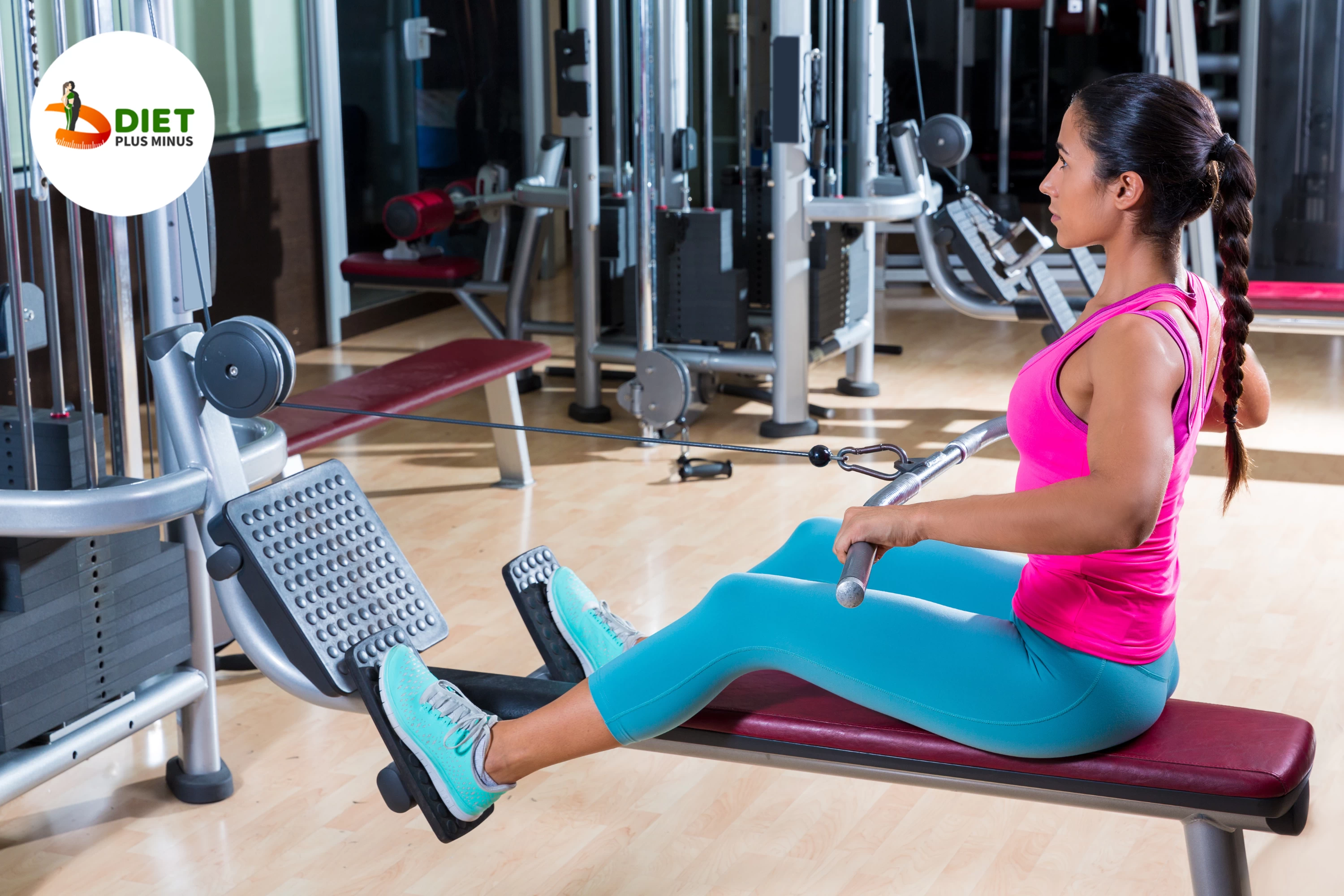Lats: Seated Cable Row

Overview of Lats
The back muscle latissimus dorsi is fan-shaped. It helps shoulder extension, adduction, and internal rotation. Lats are best targeted by the seated cable row. This exercise can be done with a straight bar, EZ curl bar, close grip handle, or rope. Sit on the bench with your legs slightly bent and feet flat on the floor. Keep your back straight and chest up throughout the exercise. Plant both hands on the attachment and pull towards your chest until your elbows are at your sides. Hold for 1 second, then slowly return to start position and repeat desired number of reps before rinsing off any lat tension.
Anatomy: Muscles and Function
The latissimus dorsi, or "lats," is a powerful back muscle. The arms and shoulders are adducted and extended by this muscle. The seated cable row targets this muscle well. In this exercise, a weight stack is connected to a pulley that holds a handle or barbell that can be pulled towards the body while seated upright. To move your arms back towards your torso against weight stack resistance, your lats contract. Cable rows also activate biceps brachii, which stabilise elbow movement. You can gradually increase lat strength and size by engaging all these muscles with proper form and resistance.
Benefits of Seated Cable Rows
Seated cable rows build a strong back and lats. They improve posture, reduce back pain, and prevent injury. The seated cable row works your lats, rhomboids, and traps. This helps create overall muscular balance, which improves sports and other upper-body-intensive activities. Each rep requires bracing against the cable machine, which builds core stability. This engages your abdominal muscles and strengthens your core for other exercises and daily activities. Finally, seated cable rows target surrounding muscle groups like the biceps, shoulders, and deltoids, helping develop them too.
Proper Form: How to Perform
Sit upright with your feet flat. Extend your arms and grip the bar slightly wider than shoulder-width. You should lean forward 45 degrees. Pull the bar towards your midsection, squeezing your shoulder blades, while keeping your back straight and core tight. Pause, then slowly return to starting position without jerking or swinging the weight. Maintain tension in both arms and use your back muscles to start each repetition instead of your legs or arms.
Tips for a Better Workout
Lats benefit from seated cable rows. Keep your back straight and body aligned to maximise this exercise. Start by holding the cable machine handle wide. Sit down and pull the handle towards your chest with your elbows tucked in. Squeeze at the top and slowly release. Lats, biceps, traps, rear deltoids, and rhomboids should contract strongly. Use an underhand grip or weight plates to challenge this exercise. Focus on form throughout each rep to maximise muscle engagement and minimise injury.
Variations: Advanced Exercises
Sitting cable rows with a twist are advanced lat exercises. Sit at a cable machine and grab the handle with both hands. Pull the handle towards you while twisting your torso to one side, then return to centre and repeat. This exercise engages more lats than seated rows. Using an overhand grip (palms down) instead of an underhand grip (palms up) targets traps and rhomboids as well as lats. Once you're comfortable with this seated row, add weight plates or resistance bands to challenge your muscles.
Conclusion
When done correctly, the seated cable row targets hard-to-reach lats. Sitting on the bench with your feet against the foot plates, gripping the pulley handle, and pulling it towards your midsection while keeping your back straight requires a cable machine. Avoid lower back strain by keeping your chest up and not rounding as you pull. Avoid momentum and use only your lats to lift and pull.
This exercise can strengthen biceps, triceps, rear delts, traps, rhomboids, and core stability muscles while targeting hard-to-reach lats. Its versatility makes it ideal for any workout programme, especially for athletes who pull or change direction. Sitting cable rows can strengthen multiple muscle groups at once, improving athleticism.
In Short:
Steps involved:
-
Sit with your back straight on the machine and grab the handles.
-
Keep your back, leg, and torso still at 900 angle and pull the handle towards your body using your arms keeping your chest out.
-
Pull the handle until it touches your belly.
-
Slowly move the handle to the starting position. Repeat.
Do’s:
-
Always keep your back straight and torso still.
-
Use the back muscles to move the weight.
-
Do pause at the peak of the movement.
Don’ts:
-
Do not bend your shoulders when your arms are fully extended.
-
Do not lean forward and use the momentum to swing the weight back.
